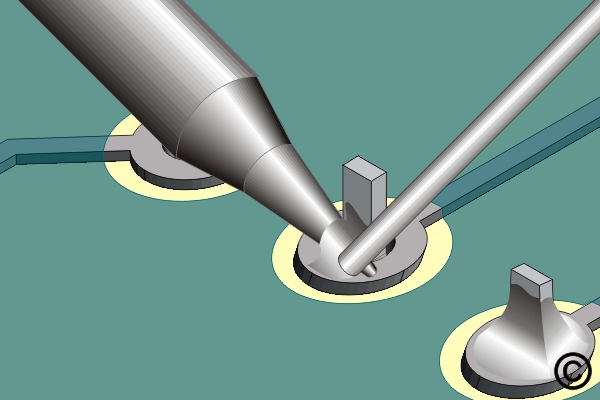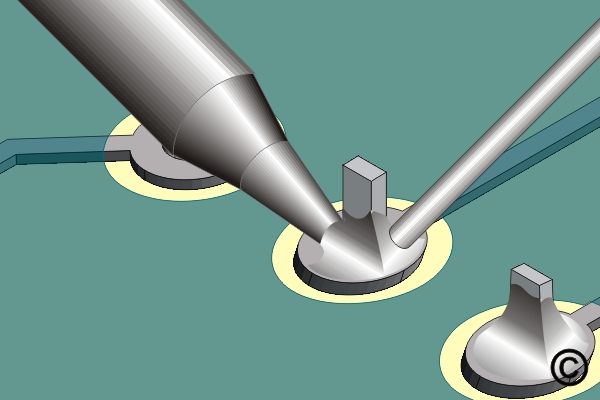|
Outline
This procedure covers the general guidelines for soldering through hole components using a point-to-point soldering method. There is basically only one style of through-hole component. The soldering principles are the same whether there are a few leads or many or whether the component is large or small.
|
|||||||||||||||||||||||
|
Procedure
Procedure
|
|||||||||||||||||||||||
Images and Figures
Soldering Through Hole Components, Point To Point Method

Figure 1. Apply solder at the junction of soldering iron tip and lead to make a solder bridge.

Figure 2. Feed solder into the joint from the side opposite from the iron tip until the proper fillet is achieved.
|
|||||||||||||||||||||||
7.2.1 Soldering Through Hole Components, Point To Point Method
Procedure covers soldering of through hole components using point to point hand soldering.
Minimum Skill Level: Intermediate
Conformance Level: Medium
REQUEST FOR QUOTE GUIDES INDEX

Soldering Through Hole Components, Point To Point Method

Apply solder at the junction of soldering iron tip and lead to make a solder bridge.

Feed solder into the joint from the side opposite from the iron tip until the proper fillet is achieved.

We're here to help with all your challenging circuit board and electronic component rework and repair needs.
LEARN MORE
SLIDESHOW STARTING
❮
❯





